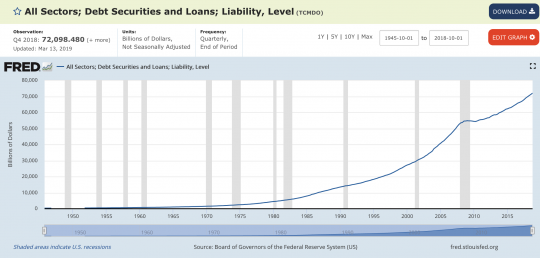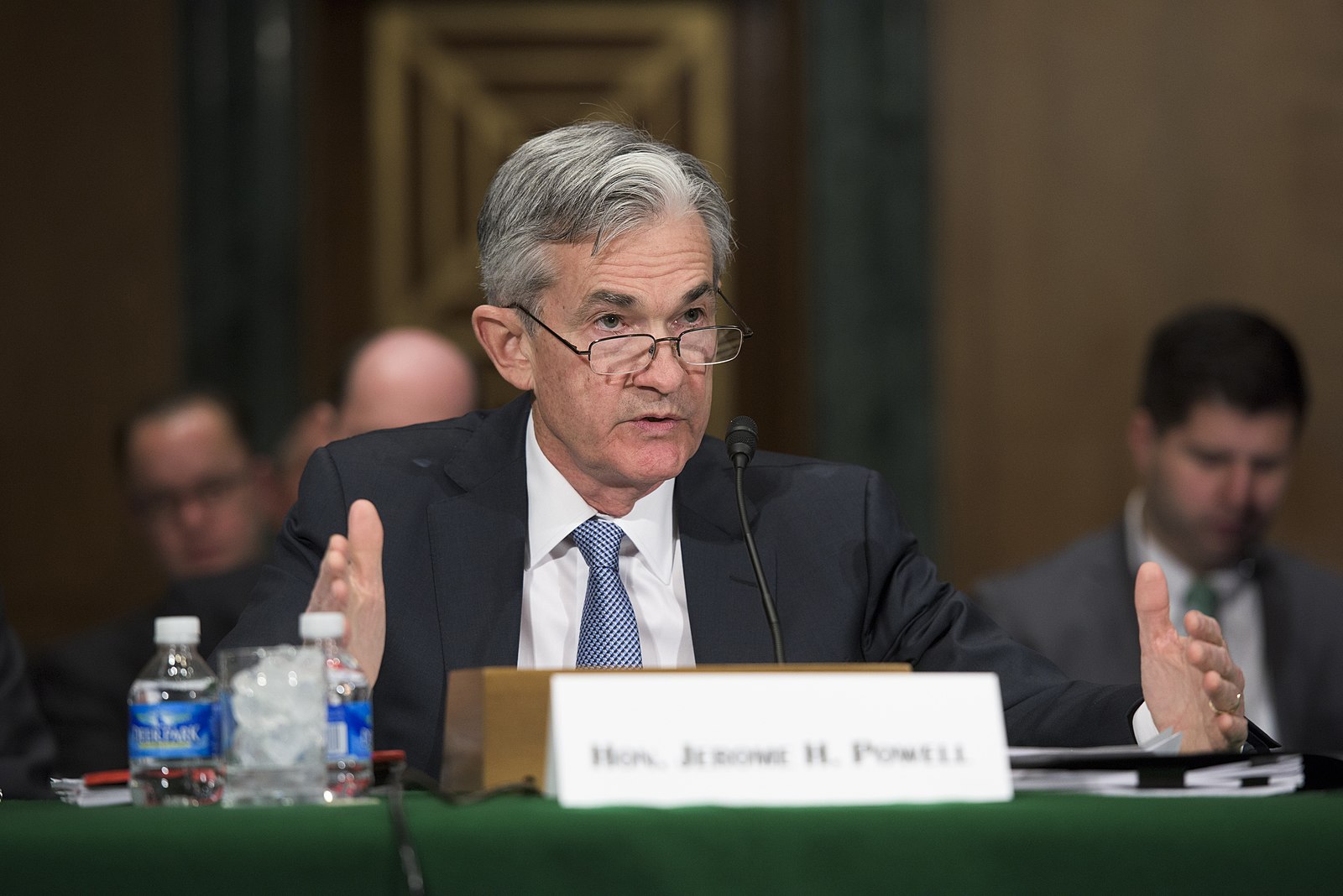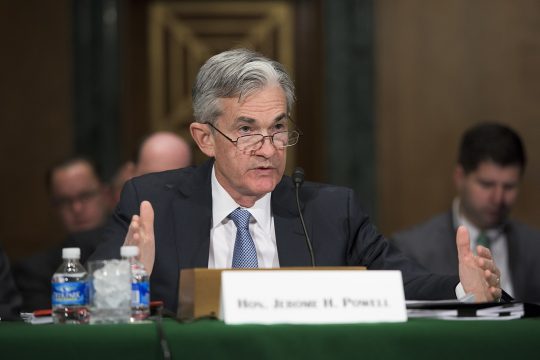 If you make a conscious choice to ignore all long-term consequences, managing your personal finances can be a lot of fun. For example, instead of rationally evaluating what sort of mortgage payment you can actually afford, why not take a plunge and buy a $600,000 house? You only live once, right? And instead of making your current dumpy vehicle last another year or two, why not take out a huge loan on a brand new $60,000 SUV? You know you deserve it. While you are at it, why don’t you go on another huge spending spree and max out all of your credit cards again. Paying off those credit cards will be very painful in the long run, but nobody thinks much about long-term consequences these days.
If you make a conscious choice to ignore all long-term consequences, managing your personal finances can be a lot of fun. For example, instead of rationally evaluating what sort of mortgage payment you can actually afford, why not take a plunge and buy a $600,000 house? You only live once, right? And instead of making your current dumpy vehicle last another year or two, why not take out a huge loan on a brand new $60,000 SUV? You know you deserve it. While you are at it, why don’t you go on another huge spending spree and max out all of your credit cards again. Paying off those credit cards will be very painful in the long run, but nobody thinks much about long-term consequences these days.
Just look at the federal government. They are 28 trillion dollars in debt and yet our politicians continue to throw money around like a bunch of drunken sailors.
Of course the federal government is far from alone. State and local governments have never been so deep in debt, we are in the midst of the greatest corporate debt binge of all time, and U.S. consumers are certainly doing their part. In fact, last quarter we witnessed the largest increase in consumer debt since just before the last financial crisis…
Americans have more debt than ever before.
A surge in credit card spending and home purchases caused US household debt to increase by $313 billion, or 2.1%, in the second quarter, according to the Federal Reserve Bank of New York.
That’s the largest nominal jump since 2007 and the biggest percentage increase in seven and a half years.
Overall, U.S. consumers are now $14,960,000,000,000 in debt.
We will shortly hit the 15 trillion dollar mark, and I think that we should commemorate the crossing of that threshold with some sort of celebration.
Of course any celebration should involve going into even more debt, because there are few things that Americans enjoy more than getting even deeper into debt.
Mortgage debt is rising particularly quickly. Housing prices have been going through the roof recently, and this has created a frenzy on a scale that we haven’t seen since just before the subprime mortgage meltdown of 2008…
Mortgage debt, the single biggest contributor to overall household debt, rose $282 billion to $10.44 trillion. A whopping 44% of the outstanding balances were originated over the past year, accounting for both new mortgages and refinancings.
But even though the US housing market is red hot and borrowing to purchase homes is through the roof, “there are still 2 million borrowers in mortgage forbearance who are vulnerable to financial distress once the forbearance programs come to an end,” said Joelle Scally administrator of the Center of Microeconomic Data at the New York Fed.
Is it just me, or does it seem like we have been here before?
All of this just seems so oddly familiar.
Of course the experts are assuring us that this even bigger housing bubble will end so much more nicely than the last one did.
You believe them, don’t you?
After being showered with trillions upon trillions of dollars by the federal government, you would think that most Americans should be in pretty good financial condition these days.
Unfortunately, it turns out that all of that money just made the gap between the wealthy and the rest of us even larger…
Americans added nearly $4 trillion to their savings during the coronavirus pandemic, but most of the gains went to the wealthy, according to a new study.
Stimulus checks, rising stock markets and fewer spending choices led to a massive savings boom over the past year, with Americans saving about $3.7 trillion, according to a study from Oxford Economics. Yet 70% of the gain went to the wealthiest 20% of Americans, the study found.
As I discussed the other day, there are millions and millions of Americans that were in danger of being thrown out into the streets once the eviction moratorium ended, but now Joe Biden has decided to come to the rescue…
President Joe Biden’s administration Tuesday issued a targeted moratorium on evictions in areas hardest hit by COVID-19, replacing a nationwide evictions freeze that expired Saturday despite legal concerns about doing so unilaterally.
The new action, in effect for 60 days, bans evictions in counties with high rates of COVID-19 transmission, reflecting where the Centers for Disease Control and Prevention recommends vaccinated residents mask indoors and in public settings.
But is this legal?
After all, we have already seen several courts rule on this, and they have said that it isn’t.
Well, just like any good career politician, Biden isn’t going to let a little thing like “legality” stand in the way…
The president said he sought input from constitutional scholars to determine whether the CDC had the legal authority to issue a new evictions action but it was unclear whether it could pass constitutional muster.
“There are several key scholars who think that it may, and it’s worth the effort,” Biden said.
Biden says that even if the courts strike this new moratorium down, it will buy some time for his administration to get aid money to those that need it.
Needless to say, what Biden has decided to do has absolutely horrified those that still actually have respect for the U.S. Constitution. Here is an excerpt from Jonathan Turley’s reaction…
…What was astonishing is that Biden acknowledged that it is still likely unconstitutional but that they could tie it up in courts to get the money out in the interim…
Sadly, Biden’s approach is typical of how most Americans deal with things.
Most of us do whatever we feel like doing in the moment, and we don’t really give too much consideration to the long-term consequences.
Let us party today, because tomorrow is not guaranteed for any of us!
Of course the truth is that “tomorrow” always arrives eventually, and our “tomorrow” is going to be more painful than most people would dare to imagine.
But for the moment, the consequences of our actions have not caught up with us quite yet, and so it is still party time.
Most Americans fully intend to enjoy this party for as long as they possibly can, but at this point time is not on our side.
***It is finally here! Michael’s new book entitled “7 Year Apocalypse” is now available in paperback and for the Kindle on Amazon.***
About the Author: My name is Michael Snyder and my brand new book entitled “7 Year Apocalypse” is now available on Amazon.com. In addition to my new book I have written five others that are available on Amazon.com including “Lost Prophecies Of The Future Of America”, “The Beginning Of The End”, “Get Prepared Now”, and “Living A Life That Really Matters”. (#CommissionsEarned) By purchasing the books you help to support the work that my wife and I are doing, and by giving it to others you help to multiply the impact that we are having on people all over the globe. I have published thousands of articles on The Economic Collapse Blog, End Of The American Dream and The Most Important News, and the articles that I publish on those sites are republished on dozens of other prominent websites all over the globe. I always freely and happily allow others to republish my articles on their own websites, but I also ask that they include this “About the Author” section with each article. The material contained in this article is for general information purposes only, and readers should consult licensed professionals before making any legal, business, financial or health decisions. I encourage you to follow me on social media on Facebook and Twitter, and any way that you can share these articles with others is a great help. During these very challenging times, people will need hope more than ever before, and it is our goal to share the gospel of Jesus Christ with as many people as we possibly can.



















